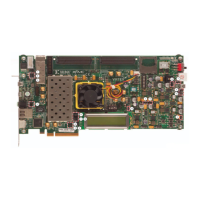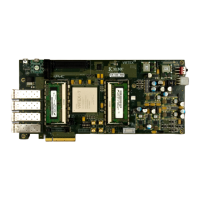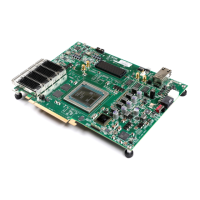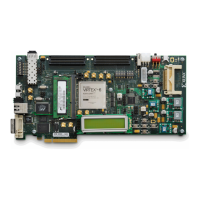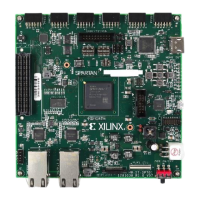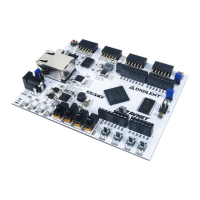Embedded Tri-Mode Ethernet MAC User Guide www.xilinx.com 23
UG074 (v2.2) February 22, 2010
Ethernet MAC Signal Descriptions
R
Client-Side Receive (RX) Signals
Table 2-2 describes the client-side receive signals. These signals are used by the Ethernet
MAC to transfer data to the client.
EMAC#CLIENTTXACK Output
Handshake signal – Asserted when the Ethernet MAC accepts
the first byte of data. On the next and subsequent rising clock
edges, the client must provide the remainder of the frame data.
See “Normal Frame Transmission” in Chapter 3.
EMAC#CLIENTTXCOLLISION Output
Asserted by the Ethernet MAC to signal a collision on the
medium. Any transmission in progress should be aborted. This
signal is always deasserted in full-duplex mode.
EMAC#CLIENTTXRETRANSMIT Output
Asserted by the Ethernet MAC at the same time as the
EMAC#CLIENTTXCOLLISION signal. The client should re-
supply the aborted frame to the Ethernet MAC for
retransmission. This signal is always deasserted in full-duplex
mode.
EMAC#CLIENTTXSTATS Output
The statistics data on the last data frame sent. The 32-bit TX raw
statistics vector is output by one bit per cycle for statistics
gathering. See “Transmitter Statistics Vector” in Chapter 3.
EMAC#CLIENTTXSTATSBYTEVLD Output
Asserted if an Ethernet MAC frame byte is transmitted
(including destination address to FCS). This is valid on every TX
clock cycle.
EMAC#CLIENTTXSTATSVLD Output
Asserted by the Ethernet MAC after a frame transmission to
indicate a valid EMAC#CLIENTTXSTATS output. See
“Transmitter Statistics Vector” in Chapter 3.
EMAC#CLIENTTXCLIENTCLKOUT Output See “Transmit Clocking Scheme” in Chapter 5.
Table 2-1: Transmit Client Interface Signals (Cont’d)
Signal Direction Description
Table 2-2: Receive Client Interface Signals
Signal Direction Description
CLIENTEMAC#RXCLIENTCLKIN Input See “Receive Clocking Scheme” in Chapter 5.
EMAC#CLIENTRXD[15:0] Output
Frame data received from the Ethernet MAC. The data path can
be configured to either 8 bits or 16 bits wide. Bits [7:0] are used for
8-bit width. The 16-bit interface is intended to be used in
1000BASE-X PCS/PMA mode. See “Receive (RX) Client – 16-bit
Wide Interface” in Chapter 3.
EMAC#CLIENTRXDVLD Output
The Ethernet MAC indicates to the client the receipt of valid
frame data.
EMAC#CLIENTRXFRAMEDROP Output
This signal is asserted to notify the client that an incoming receive
frames destination address does not match any addresses in the
address filter. The signal functions even when the address filter is
not enabled.
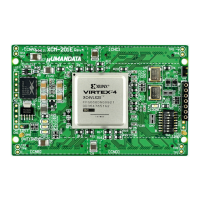
